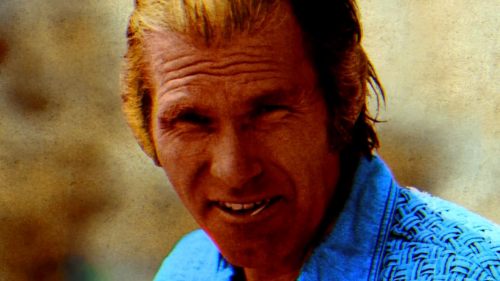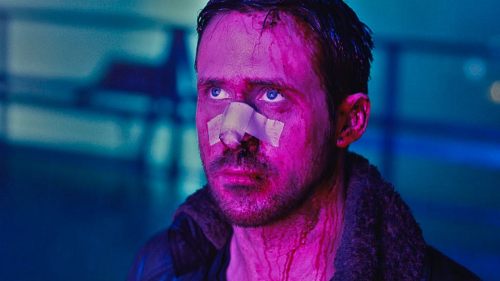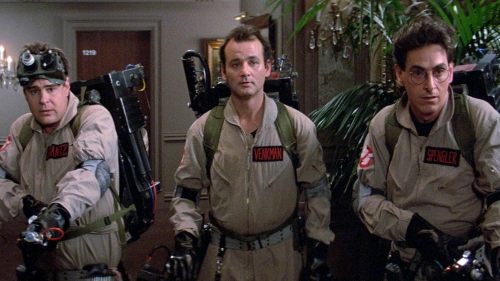Collins’ Crypt: The AVENGERS Were Just Ripping Off Charles Band!
I attended my first Comic Con as a fan, not a writer - buying a pass and going to panels just for the sake of enjoying them, not because I had to have an article about their content. This was in 2006, and while I can't remember everything I went to, I distinctly remember sitting in the audience as Jon Favreau, Louis Leterrier, and (sniff) Edgar Wright talked about their plans to bring Iron Man, Hulk, and Ant-Man to the screen, respectively. But it wasn't the idea of three more comic book-themed movies coming along that was the big news - this was the summer of Superman Returns and X3 after all - it was the plan (hinted at by Kevin Feige, a name that didn't mean a lot to most of the people in the room* at the time) to make an eventual Avengers movie where those characters would cross over after debuting in their own films.
Luckily for them it seems to have worked out OK - a shared movie universe that has stretched across 22 films and counting, breaking all kinds of box office records and earning unparalleled numbers of fans around the world. It was a plan that some said would never work (there was brief talk of making the first Avengers movie "Iron Man 3" after the non Iron Man films failed to make the same kind of money) and then became a template for so many other franchises: the DCEU is the most (in)famous of course, but James Wan's Conjuring has spunoff three separate franchises already with no signs of slowing down, and the Fast & Furious movies are giving it a shot this summer with Hobbs & Shaw. And then there's the Dark Universe... oh, wait.
Actually, the Dark Universe is a good point of reference, because it was based on what was one of the first attempts at this kind of shared world. In the 1940s, after pumping out a few sequels to their earlier hits (Dracula and Frankenstein primarily), Universal Studios had the idea to combine two of them with Frankenstein Meets The Wolf Man, and its success paved the way for a few more "Monster Rally" films, where Dracula and some of their other characters popped up, albeit sometimes with different actors. It was pretty slapdash in retrospect, not to mention somewhat confusing in the case of Lon Chaney Jr., as he took over the role of Dracula and Frankenstein's Monster in those respective franchises at different times, only to come back as Wolf Man with new actors in those roles when the characters met up. The films aren't classics by any means, and the interactions are sometimes obnoxiously brief, but the general idea of all of these worlds existing as one was pretty exciting.

But I came to those late in life - I think I was in my twenties before I saw a classic Universal Monster movie in its entirety. No, the film that blew my mind with the idea that two separate movies that I saw might actually take place in a shared cinematic world was Dollman Vs. Demonic Toys, a 1993 Full Moon effort that combined three of their previous movies: Dollman (1991), Demonic Toys, and Bad Channels (both 1992). At 13, this seemed like the coolest thing in the world, opening my ill-informed mind up to the possibilities of things like John McClane teaming up with Riggs and Murtaugh, or Michael Myers fighting Jason Voorhees (Freddy vs. Jason had already been teased, but then and now I still believe Jason coming to Haddonfield would make a more exciting battle). It just seemed like something that couldn't be done; I mean, we already had Superman and Batman movies from the same studio, and they didn't ever reference each other, but somehow Full Moon president Charles Band had figured it out.
Running an economical 61 minutes with credits, the film picks up more or less as a direct sequel to Demonic Toys, with that film's hero Judith Gray (Tracy Scoggins) obsessed with the idea that the killer toys she took care of in the first film have somehow returned. One night her theory is proven correct, though her attempts to take them out again lead to her suspension on account of looking like a crazy person shooting at toys. Meanwhile, Brick "Dollman" Bardo (Thomerson) finds out about the existence of another 13 inch tall human (Melissa Behr, returning as Ginger from Bad Channels) and makes his way to her to offer some advice about being small (and then, five minutes later, they hop into the kitchen drawer she uses as a bed). Judith finds out about their existence and realizes that tiny toy-sized humans are the exact thing she needs to take out the murderous toys and clear her name, and so the trio sets off to the toy factory, preparing for battle.
As with the first Avengers and now the newer entries (Age of Ultron didn't add any feature characters to the mix), there's a good chance someone saw this crossover because they were a fan of one of the three movies and hadn't even seen the others. Indeed, to this day, I've never seen Bad Channels, so when Ginger shows up it means nothing to me - just as it meant nothing for Hulk or Hawkeye to show up in Avengers to someone who had only watched the two Iron Man movies (based on the box office of those Phase 1 movies, it seems that could have been a lot of people). The difference is that Marvel's string-pullers care not one iota about giving newcomers a bit of a primer of who anyone is when they show up in a big teamup movie like Infinity War; outside of the occasional gag that acknowledges that some films don't cross as much as others (Bruce Banner's confusion over the fact that they "have an Ant-Man now" in that film is comic gold), the filmmakers always just assume we know who's who and don't waste time re-explaining it, because that would be very dull to the folks like me who see all of these things on opening weekend.

But none of those guys are as notoriously thrifty as Charles Band! As I mentioned this movie only runs 61 minutes, and 10-15 of those are spent on flashback footage to the respective three films. After a quick hello from Dollman, it presents the climax of Demonic Toys to bring folks up to speed, and then later when Dollman meets Ginger, they both offer the other (read: the audience) a Cliff's Notes version of their own films. So along with the credits, there's only about 40 minutes' worth of new footage in this (barely a) film, a maneuver Band would use on some of the Puppet Master sequels, as well (and presumably others; I have little love for anything they put out these days that I've managed to catch and so I haven't exactly kept tabs on the likes of Killjoy). Even though Marvel had a reputation for being cheap in the old days, they never saved a few bucks by having Thor explain his history to the others by stopping Avengers cold to present a lengthy flashback sequence and eat up some of the runtime.
That said, Band did have the stones (heh) to do something the Avengers movie didn't: kill off one of the main heroes (all due respect to Phil Coulson). Scoggins' Judith is surprisingly killed off around forty minutes in (so, the end of act 2!), leaving Dollman and Ginger to do battle without their much bigger partner's help. It's something that horror franchises can (should?) do in a way a comic book movie franchise really can't, because the villains are the real stars here, and it's far more important that the evil dolls come back again and again, as there can always be other heroes to fight them. But still, given Scoggins' then-penchant for appearing in DTV genre fare, it seems kind of ballsy to off her just as the universe was starting to expand - she could have become a tiny monster killing expert and hunted the Puppet Master dolls! Instead, according to the Videozone behind the scenes piece, Band planned to have Tim Thomerson's Dollman cross into their other franchises, using him as a sort of James Bond type who would have all of these crazy, presumably continuity-lite adventures fighting monsters and aliens we had already met in their own films.
Alas, that didn't happen for whatever reason, so this experiment didn't really pan out the way Marvel's did. It's a shame though - it could have been an easy way for Band to retain interest in the other Full Moon properties over the years - I'd maybe watch an Evil Bong movie if Thomerson showed up as Dollman again. Instead, the two men just focused on their (unrelated) Trancers series, the Demonic Toys got two (AWFUL) other movies much much later (one a crossover with Puppet Master, though Band had nothing to do with it and it's not considered canon), and Bad Channels has never been revived in any capacity. So it turned out more like the DCEU than the MCU, but I guess that's kind of fitting when you consider who wrote the original Demonic Toys in the first place. Still, it was a fun and relatively ambitious idea for its time, and the movie itself is kind of enjoyable even today (it certainly has better FX than any Full Moon release in the past 15-20 years), so even if the universe didn't really continue I still consider it a success. I hadn't seen it since I was 13 or 14, and expected it to be unwatchable, but had a good time with Baby Oopsie Daisy's cheesy one liners, the legitimately impressive oversized set effects, and Thomerson's laid-back hero antics. And I discovered this in exactly one third of the time it took to watch Endgame!
*A much tinier room than you'd probably imagine - it wasn't even Hall H. In fact I'm pretty sure I was only in there because I wanted to see the following panel. Crazy times...



